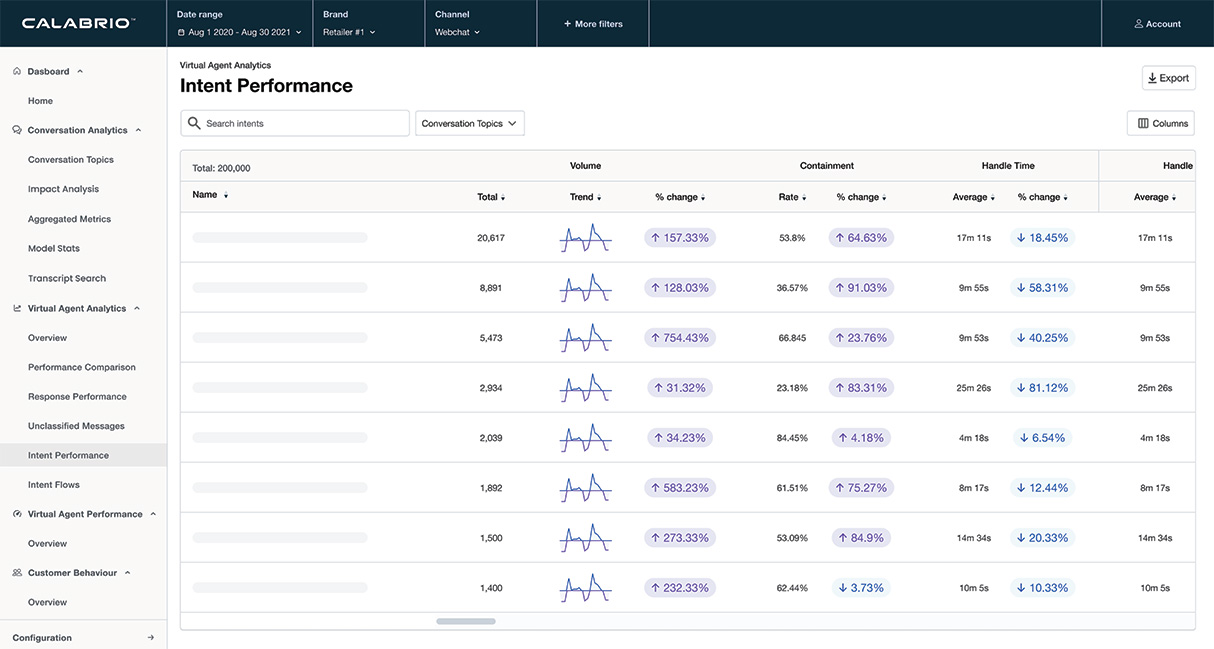5 Tips for Presenting Customer Information Data Across Your Organization
5 Tips for Presenting Customer Information Data Across Your Organization

As advances in technology have empowered customers and increased their expectations, both the cost of losing a customer and the value of retaining one have grown. The need for accurate, ongoing insights into customer preferences and behavior is greater than ever.
The traditional way businesses have tried to learn what their customers think was to pay huge fees to market research firms that would then conduct polls and hold focus groups. But what if it was possible to cut out the middleman? Today, more businesses are realizing they have the complete voice-of-the-customer – a goldmine of insights – sitting uncultivated in the hours of call recordings, gigabytes of chat transcripts and other records of customer interactions.
There are powerful insights to be found in all the data gathered by a modern contact center. While creating reports and mining insights used to require a team of data scientists and business intelligence professionals, that’s no longer the case. Today’s contact center analytics tools make it simple and intuitive for business users to explore interaction data and find valuable information on customer trends.
HOW TO PRESENT CUSTOMER INTERACTION INSIGHTS TO THE C-SUITE
Data-driven decision making is the way of the world today. C-suite executives demand clear, data-based explanations to justify changes to business plans. They want to know, “How can we use this information to improve products and services or streamline operations in the contact center and beyond?”
Like many departments, however, contact centers face challenges in effectively presenting customer interaction data in ways that influence business leaders to act. Even the most credible contact center leaders risk having their message go unheeded if they don’t communicate information in a way that resonates with their audience. How do you effectively present your message when each person’s background, technical expertise, and experience can vary so widely?
Here are five tips for presenting meaningful customer interaction data across your organization to get results.
1. Customize your message based on your audience
First and foremost, consider your audience’s priorities and motivations when determining how to present your ideas.
You likely did a robust analysis to come up with the results you’re sharing. But how much detail of that process do you need to discuss? For some people, understanding the basics of an approach is all they need to feel comfortable making a decision. Others, however, may require a deeper technical understanding. And others still – usually leadership team members – will want a thorough understanding of how your ideas impact the business as whole, not just the contact center. You need to cater to your stakeholder’s individual needs to gain the buy-in you require.
2. Speak the language of your audience
Put yourself in your audience’s shoes and present your message using terms appropriate to their role in the organization. A technical deep-dive into speech analytics methodology may be appropriate when presenting customer insights to peers or analysts, but your CFO may not be familiar with the concepts and grow frustrated or bogged down in trying to grasp that level of detail. Use technical terms and jargon sparingly, and only if you’re confident the audience will understand them.
Also think about your audience’s comfort level with the terminology you plan to use. With each technical term, ask yourself if it is truly necessary to include to convey your message. If it is, define the term up front using context the audience will understand. And if it’s not necessary, don’t use it. You may be surprised how much you can say without using complex niche terms.
3. Don’t just present data – convey information
When you deliver a presentation long on data and short on explanations, your audience may see the same facts as you do but come to a completely different conclusion about what it means. Don’t leave the interpretation of the data up to them.
For example, you notice that, while average call handle times are increasing, the rate of increase has slowed substantially since the implementation of a new training program. You present the average handle times to your boss to request funding to expand the program. Without context and an explanation your boss may focus solely on the continued increase and miss the impact that the program has had, making them likely to deny your request.
Steer your audience toward the conclusion you want them to draw by relating the data to your message, explaining why it is important and making clear your recommended course of action.
4. Be selective with the information you present and the order in which you present it
Capture interest and orient your audience by presenting the most important information up front. You may wish to proceed chronologically by explaining your analysis, showcasing the data, and then getting to the action items, but in doing so you risk losing your audience before you even make your point.
Including the correct amount of information is just as important as organization. Too much or too little detail for your audience’s needs can cause them to become lost, detached or bored. Use the highest level of detail that you can while still conveying everything the audience needs to know. Consider that the appropriate content and level of granularity will likely change along with your audience. Different audiences have different responsibilities and priorities, and the content you share should speak to those unique needs.
5. Employ data visualizations wisely to communicate your quantitative message
Data visualizations can help your audience efficiently understand large and complex amounts of data in a short period of time. A well-designed chart or graph can go a long way toward increasing the impact of otherwise complicated concepts. The visualizations you choose should help explain your data and support the message you are trying to send.
Ask yourself these questions when preparing presentations about your data:
- What is your audience’s comfort level with different types of graphs?
- Which type of visualization will best emphasize your point?
- How much explanation will be required?
In general, you should use the simplest visualization available that will still convey all necessary information. If a basic column chart is the clearest option for communicating your conclusion, don’t muddy the waters by using a confusing radar chart for novelty. Regardless of the type of graph or chart you choose, remember to orient your audience to it by explaining what the visualization shows and why it is important.
Finally, be mindful of striking a balance of visualizations that support your message and presentation rather than detracting from it. With too many graphs or otherwise crowded slides, you run the risk of your audience focusing solely on your slides and not on what you are saying. Without any visualizations, your audience may have a hard time following your message.
Customer interaction data can be confusing or seemingly irrelevant to those unfamiliar with the day-to-day workings of the contact center. To help your contact center truly impact the customer experience and the organization’s bottom line, present customer interaction data in a way that your audience – no matter where they sit in the enterprise – can understand.









